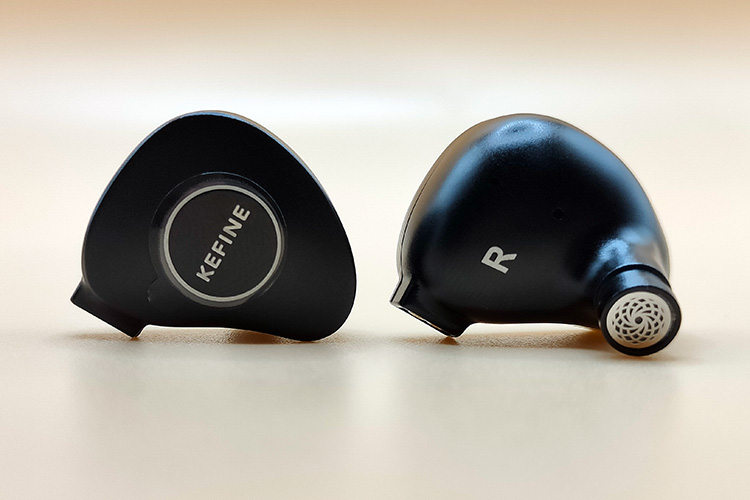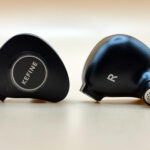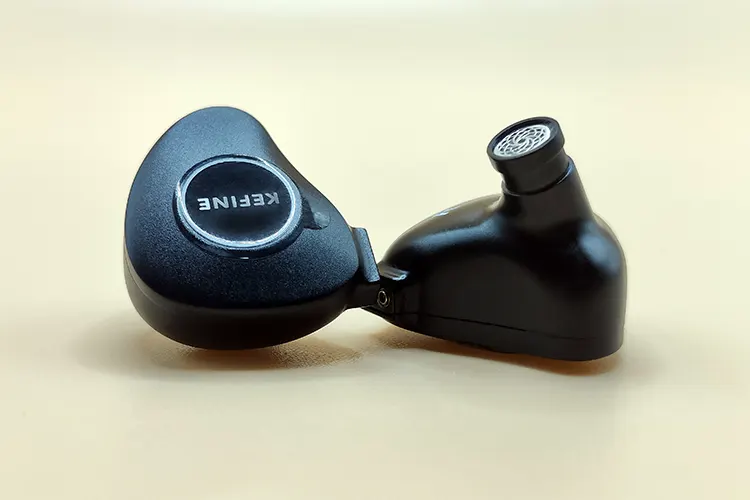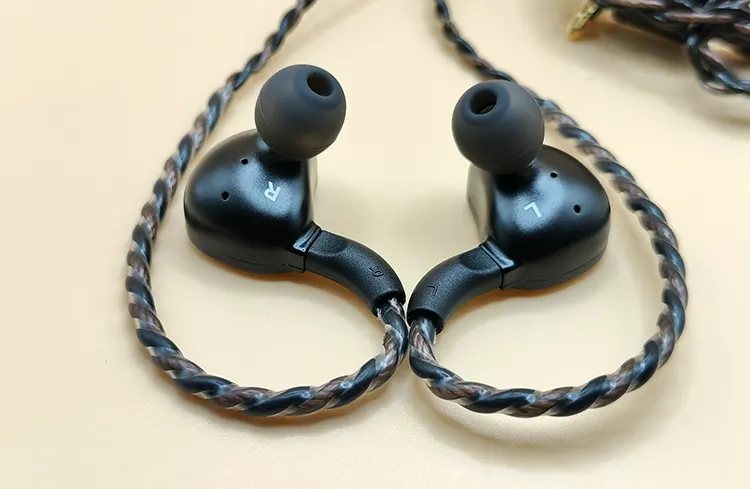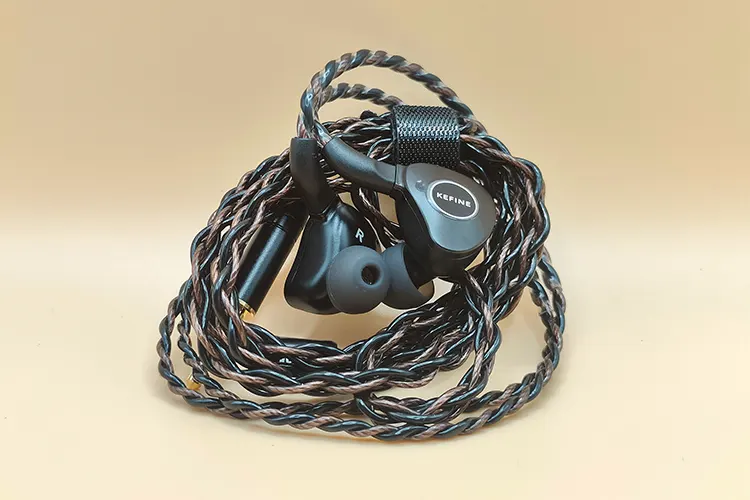Today, we review the KEFINE Klanar, which is the company’s debut universal in-ear monitor featuring a single 14.5mm planar magnetic driver. It is priced at $119 SRP.
Disclaimer: This sample was sent to us in exchange for our honest opinion. Headfonics is an independent website with no affiliate links or status. We thank KEFINE for their support.
To read more about planar magnetic IEMss we have previously featured on Headfonics click here.
Please note, that this article follows our current scoring guidelines which you can read in more detail here.
Joining the audio world and community, KEFINE takes its first step by introducing the Klanar, which is a 14.5mm planar driver universal IEM.
KEFINE comes from Dongguan, China, and their name was taken from their founder’s name, Ke, and combined with the word Refine to make their name KEFINE.
The KEFINE Klanar is priced at $119 and pitched on the high side of budget audio but certainly fairly affordable. What makes it interesting is the planar driver technology. This is a growing niche at this price point in 2023 with competing models such as the LETSHUOER S12 recently released also.
Does KEFINE’s first offering have what it takes to compete with similarly priced IEMs though?
Tech Highlights
The KEFINE Klanar uses a 14.5mm planar driver. Its driver’s components included a PET composite diaphragm and an N55 magnet to create its customized driver construction.
KEFINE claims that this driver is a renowned 14.5mm planar driver that delivers potent bass ahead of other planars, a midrange that’s warm and rich, and exceptional clarity for immersive listening.
Design
The KEFINE Klanar has a basic black-on-black design from its shell to its cable. There isn’t any color here aside from black and a little bit of white to label its left and right sides.
There are 2 vent holes in the front shell near the nozzle. This alleviates the pressure from the bass and gives a comfier experience.
Looking at its nozzle, the filters have a unique flowery design on them. It’s a nice surprise to see when you’re changing tips.
Meanwhile, its shell is crafted from a single piece of aluminum alloy using a 5-axis CNC precision machine. The width of the shell’s wall is only 0.2mm, making it comfortable for all ear types or sizes.
The shell also has a matte finish to make it glossy. The only design on this full black setup is the KEFINE logo on its back shell.
Aside from the design, it uses a 0.78mm 2-pin connector. The KEFINE Klanar is available for both 3.5mm or 4.4mm balanced terminations on it.
Comfort & Isolation
For the comfort of the KEFINE Klanar, is exceptionally comfortable and fits snugly to my ears whilst avoiding an intrusive feeling at the same time.
I can sleep wearing the Klanar and even not feel them as a side sleeper. They go deep into my ears making them never pop out or feel like a pointed object.
With long usage, the Klanar is great. It doesn’t strain my ears at all to the point that sometimes I forget I have anything in my ears.
For the isolation, it’s below average to just okay. I’m testing them with the stock tips, and there isn’t any great sealing for the bass or fit using it.
Changing the tips to my DUNU S&S, the bass is greatly sealed giving a better experience. Unfortunately, passive noise cancellation still isn’t great with it. With either stock tips or 3rd party tips, the passive noise cancellation is below average. Sound outside gets in easily which makes the Klanar a bad choice for commuters.
Tips
The KEFINE Klanar out of the box already has medium-sized silicone tips attached to it. These tips are just okay, nothing great.
Aside from the ones attached to the IEMs, the other tips are the regular silicone tips that you’ll see in many other IEMs. Their quality is similar to those of others as well.
Not much can be said about them other than they are suitable for daily use. Just don’t expect excellent sealing or a controlled bass experience with them.
Stock Cable
The cable is a 54-core 4-wire cable with alternating black and brown or copper-colored wires. This cable feels stiff when using it.
It isn’t that comfortable when using it. It rubs on your clothing a lot adding unnecessary noise and interference to your usage. It has a Velcro cable tie and a chin slider as well. Aside from that, it’s a standard cable with okay looks.
Packaging & Accessories
The KEFINE Klanar comes with a carrying case, the IEMs, extra tips, and the cable. It has all the things that anyone would use or need with daily usage.
The carrying case is significantly big, but it is sturdy. Its design is grey and rectangular with the KEFINE name on top and a black zipper to open or close it. Other accessories can go inside the carrying case. It has enough space to fit your IEM, a dongle, extra tips, and a cleaning cloth.
Sound Impressions
Bass
This is the bass you would expect from a dynamic driver. I was surprised to hear this type of bass quality from a planar driver.
This performs like a dynamic driver but is elevated in quality. You get all the bass goodies like bass rumble, texture, punch, slam, and everything else with this without it feeling incomplete.
The strength of its slam and punch is great. You feel it without sounding intrusive to other parts of your music.
It rumbles strongly and does justice to a lot of the music I have. Not once did I feel I wanted more or less from this set. Adding to that, this is a bass-rich set where I can feel and hear the texture of the bass. It does this well and is greatly enjoyable.
There isn’t a miss or a bad part with how KEFINE tuned its bass at all. For a planar driver, this beats out a lot of its planar competitors.
Mids
The midrange of the KEFINE Klanar is a mixed bag. This isn’t a bad mixed bag at all, rather it’s something that some people will need more or less of.
Starting with the timbre, it’s natural enough but it has a sense of sharpening to it. You’re able to hear this sharpening with vocals and instruments with live recordings.
It sounds unnatural when you hear that sharpening. This sharpening doesn’t appear with other music I’ve tried weirdly enough.
Aside from that, the vocals are full, thick, and rich. Male vocals here sound exceptionally good because of how heavy they are. Unfortunately, there’s some graininess with male vocals. This isn’t present with female vocals.
After trying out numerous music and other IEMs to compare, the graininess can be heard in all music sadly.
For female vocals, it’s a bit thin and recessed for my liking. As someone with a lot of music with female singers, I hear the recession and thinness of it compared to other IEMs.
The recession of female vocals is obvious when they get shadowed by the instruments in tracks. When listening to pop music, this recession and layering of vocals and instruments can be experienced.
Aside from that, the timbre of the mids and the heaviness of male vocals make up for the Klanar despite the issues I’ve found.
Treble
This is part of the KEFINE Klanar is both impressive and mediocre at the same time. The treble of the Klanar is also a mixed bag like its midrange.
As a planar IEM, you’d expect the detail retrieval to be impressive and compete above its price but no, it doesn’t with the KEFINE Klanar. The detail retrieval is mediocre for the Klanar.
It’s mediocre when I compare it to other planars, but against dynamic driver IEMs, it does great and has more detail than any of them.
For the impressive parts of the Klanar, let’s start with the separation. In short words, the Klanar has great separation of the instruments, vocals, bass, and other parts of the music.
Even with my crowded and messy music, it never fails or gives up in giving wonderful separation. I can pinpoint the instruments well even if everything in the music starts playing.
Another impressive part of the Klanar is that it has zero sibilance. As a planar, this is something to be proud of since the common issue of planars has been the treble.
I can listen to those high hats, ‘s’ sounds, bells, and many more without issue here. There are no piercing highs with this set at all.
Staging & Dynamics
Surprisingly, the KEFINE Klanar delivers a wide soundstage and accurate imaging. This is the planar that probably has one of the best soundstages I’ve tried.
Only a few planar IEMs can achieve a wider staging than the Klanar, namely the Raptgo Bridge due to its open-back design. Fortunately, the Klanar doesn’t have the wonky tuning in the mids like the Raptgo Bridge.
The imaging in this set is great. There is a sense of far and farther left or right positioning with the Klanar.
It has more depth than height. Its level of depth is far-reaching which lets me give it the crown compared to its other planar competitors on imaging alone.
For its dynamics, unfortunately, how the mids are tuned makes this part of the IEM sound worse than it truly is. The bass and the treble have great dynamics, nothing overpowering the other, but the mids become recessed.
The bass and treble overpower the mids in a lot of time, it’s a V-shaped tuning, but the vocals sound noticeably recessed. The dynamics of the Klanar are a hit or miss due to this.
Soundstage and imaging are a strong point of the Klanar. On the other hand, dynamics is one of its weak points making it not a good choice for those wanting a balanced audio experience.
Click on page 2 below for our recommended pairings and selected comparisons.

